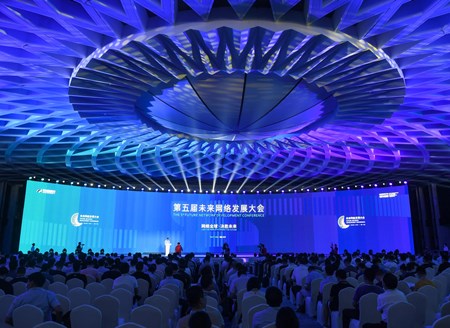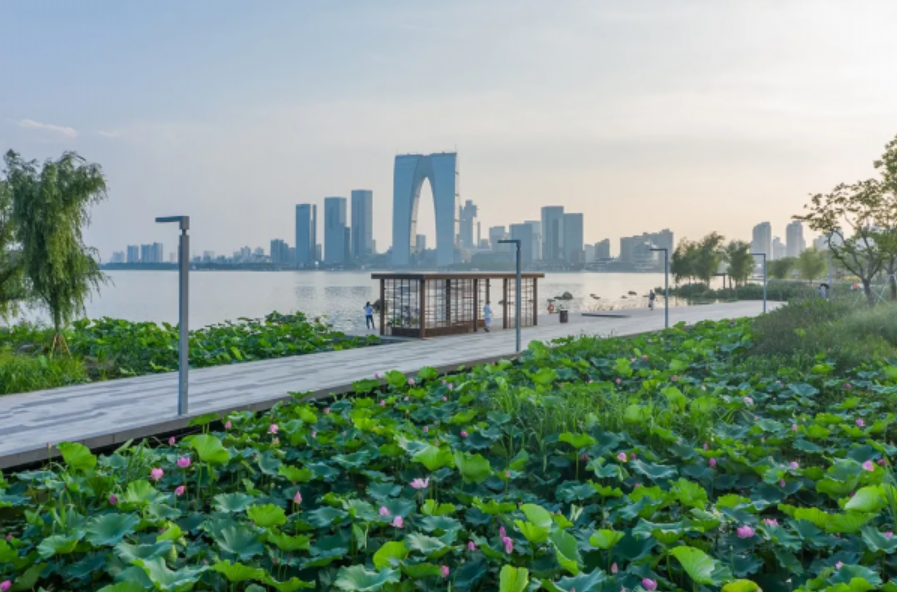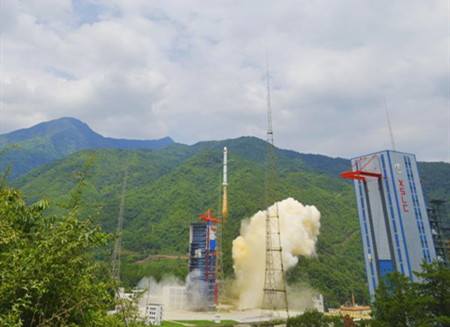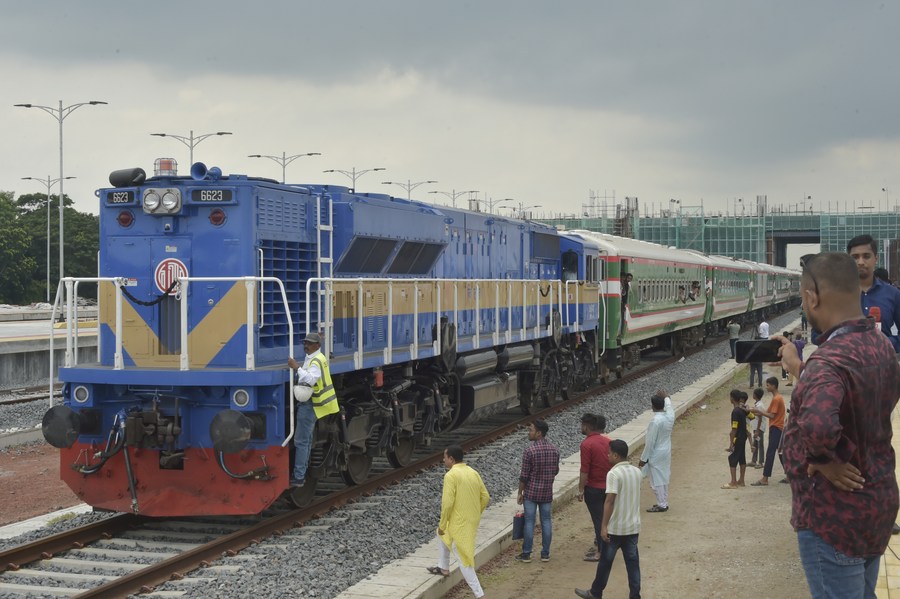
A man takes photos of a train ready for a trial run along the newly-constructed mega Belt and Road Initiative (BRI) rail line via the China-built Bangladesh's largest Padma Bridge on the outskirts of Dhaka, Bangladesh, on Sept. 7, 2023. (Photo by Salim/Xinhua)
Flagging off the trial run on the Padma Bridge rail link, Bangladeshi Railways minister gave credit to the performance of the Chinese contractor and looked forward to advancing cooperation with China.
This is a "historic moment," Bangladeshi lawmaker Saifuzzaman Shikhar told Xinhua, adding that "I'm crossing the Padma Bridge by train. It was a matter of our past dreams. But it is a reality today."
The train that Shikhar mentioned is the first train on a newly constructed Belt and Road Initiative (BRI) railway line on Bangladesh's largest Chinese-built Padma Bridge. The Padma Bridge Rail Link Project (PBRLP) is one of the most significant projects under construction by the China Railway Group Limited (CREC) and funded by the Export-Import Bank of China.
With the Chinese-made passenger coaches, the test run of the train, about 80 km of stretch of 172-km rail route, was flagged off from the capital Dhaka's central Kamalapur Railway Station on Thursday morning.
Some 600 people, including members of the Bangladeshi parliament, witnessed the landmark event. "We're very happy that (you know) China is a partner in many of our development activities," said the lawmaker from Magura district in southwestern Bangladesh.
"For completing our project on time, I would like to express my sincere gratitude to the Chinese government and this Chinese company (CREC) on our behalf," Shikhar said.
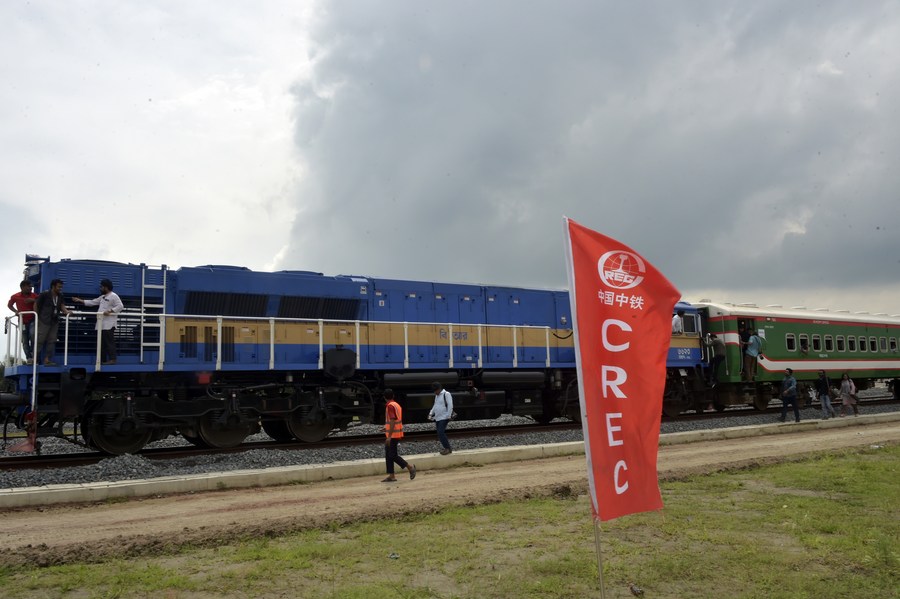
Passengers prepare to board a train during a trial run along the newly-constructed mega Belt and Road Initiative (BRI) rail line via the China-built Bangladesh's largest Padma Bridge on the outskirts of Dhaka, Bangladesh, on Sept. 7, 2023. (Photo by Salim/Xinhua)
"We have reached a milestone of success, and the credit can be given to the Chinese. We can give (credit) to the Chinese contractor CREC," said Shamima Nasreen, deputy director of Bridge Viaduct of the PBRLP.
CREC workers welcomed the train, waving mini-flags of Bangladesh and China and setting off fireworks when the train passed a station near the Padma Bridge.
"After five and a half years of hard work, we have realized the completion of the priority section for this project," Shi Yuan, project director for the PBRLP, said.
The BRI raiway is one of the government-to-government (G2G) projects and one of the largest infrastructure projects in Bangladesh, said Shi, stressing that "we are very happy and proud to be involved in such an important project."
The BRI, a reference to the Silk Road Economic Belt and the 21st Century Maritime Silk Road, was initiated by China in 2013 to build trade and infrastructure networks connecting Asia with Europe and Africa on and beyond the ancient Silk Road trade routes.
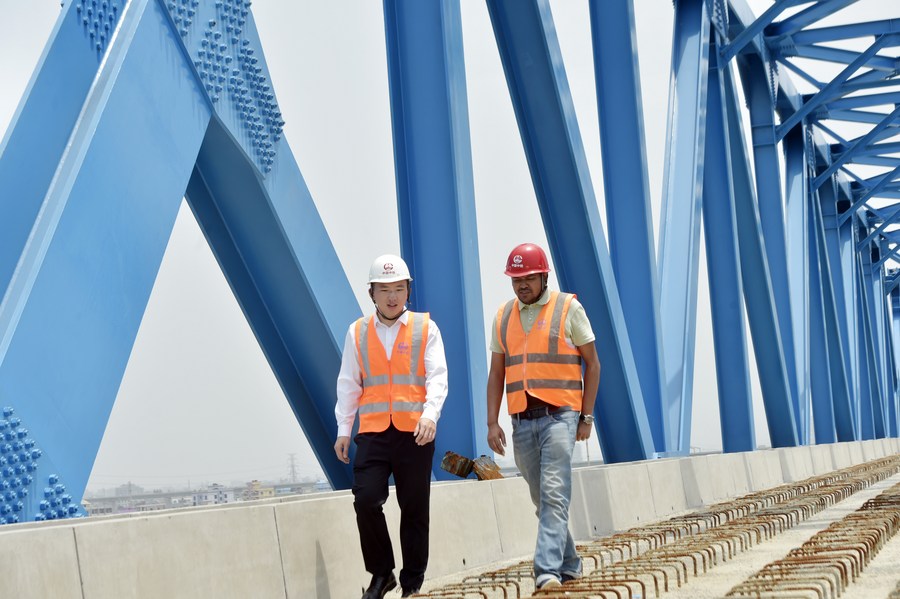
Zhang Yadong (L), an engineer from China Railway Group Limited, works with a Bangladeshi man on the Padma Bridge Rail Link Project in Dhaka, Bangladesh on May 2, 2023. (Xinhua)
Taking the train, Bangladeshi Railways Minister Nurul Islam Sujan expressed his deep satisfaction with the performance of the Chinese company, saying Prime Minister Sheikh Hasina would inaugurate train service on the Dhaka-Bhanga route next month.
Noting that China is a country with advanced technology, Sujan also expressed the hope that China will continue cooperating with Bangladesh in the future.
Bangladesh has an excellent economic relationship with China, said the minister as he flagged off the trial run via the lower deck of the double-decked Padma Bridge, which carries a highway on the top deck.
The full length of the Padma Bridge rail link, which will lead up to Jashore in the southwestern region of Bangladesh, is 172 km and the railway is scheduled to be completed in 2024.
The history of crossing the mighty Padma River between dozens of districts in southern Bangladesh and the capital of Dhaka only by ferries or boats ended in June last year as the bridge was opened to traffic.
Both the bridge and the railway, a vital part of the trans-Asian railway network, are expected to promote regional connectivity and the economic development of Bangladesh.


